 |
 |
|
|
|
|
| Nepal 2008: Human Rights |
|
|
|
|
|
| Nepal: Displaced children face hardship |
IRIN, 8 November 2008
"When can we go home?" is Furma Lama's constant refrain. The 10-year-old has spent the last eight years displaced since her family fled Ramechhap District, 100km east of the capital, in fear of former Maoists rebels.
The rebels, who had accused them of being government spies, seized their farm and livestock, leaving nothing to live on and forcing the family to move to Kathmandu to find work and help.
However, her parents work as daily wage labourers in local construction sites and factories earning barely US$2 per day.
Furma and her four siblings are forced to sleep on the cold floor, share their clothes, and eat only one meal a day.
"There is never enough to eat. We're eating less nowadays to save for the coming months," said her younger brother Gautam.
''Most of the displaced children need humanitarian support. Sadly they have been ignored.''
Problems worsening for children
Despite the end of the decade-long armed conflict in 2006, more than 50,000 displaced persons, many of them children, are still unable to go back to their villages due to fear of the former rebels and their refusal to return their farmlands.
Thousands of displaced children such as Furma and Gautam continue to live under difficult circumstances with their impoverished relatives or parents in the capital and other cities.
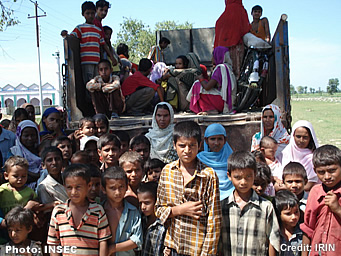 |
|
His team also regularly approaches households in the capital for donations of food and clothes. For children of the displaced in the country's urban areas, prospects look bleak.
Education support needed
"The government should at least show some sensitivity towards the plight of the displaced children," said internally displaced person (IDP) rights activist Gopal Bahadur Shah from Maobadi Pirit Rastriya Sangharsa Samiti, a national committee of conflict-displaced families.
"It
should introduce education programmes so that they can regularly attend
school," he said.
Yet
government officials, requesting anonymity, blamed the lack of updated
information for a clearer picture of the displaced children's situation.
Aid agencies explained that since displaced children were scattered around the capital, conducting research was difficult.
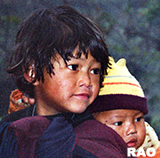 |
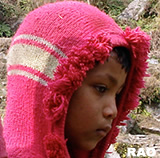 |
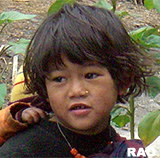 |
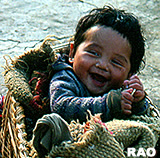 |
However, IDPs explained that all the aid agencies and the government had to do was announce their presence and they would gather anywhere and at any time with the children.
"I want to study. I want to go to school," said seven-year-old Hukum Prasad Oli in the capital, where he is living with relatives, who were also displaced from the remote Rukum District, nearly 500km northwest of Kathmandu. Oli's father died while his mother disappeared after leaving him with his aunt.
Some local community schools have tried to help sponsor the education of the displaced and orphaned children such as Oli but have to provide evidence from local government officials in their native villages that both parents were lost in the conflict.
| Credit
IRIN 2008 Copyright © UN Office for the Coordination of Humanitarian Affairs 2008 [ This report does not necessarily reflect the views of the United Nations] Integrated Regional Information Networks (IRIN), part of the UN Office for the Coordination of Humanitarian Affairs (OCHA). |
 |

